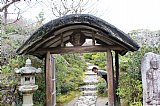Introduction
Japan, an archipelago nation in East Asia, stands as a beacon of a unique and enduring cultural identity, distinct in its blend of ancient customs and modern innovations. This article delves into the intricate tapestry of Japanese cultural traditions, offering insights into the rituals, practices, and values that have shaped the Japanese way of life for centuries. Our exploration is not just a mere listing of traditions; it is an immersive journey through the heart and soul of Japan, illuminating the nuances that make Japanese culture a fascinating study for both the uninitiated and the well-acquainted.
Understanding the Essence of Japanese Traditions
At the core of Japanese culture lies a deep-rooted respect for harmony, respect, and a profound connection with nature. These values are evident in every aspect of Japanese life, from the meticulous preparation of food to the serene rituals of tea ceremonies. The Japanese ethos is characterized by a delicate balance between preserving the past and embracing the future, a philosophy that has allowed them to navigate the rapid changes of the modern world while maintaining a strong sense of national identity.
The Uniqueness of Japanese Aesthetics
Japanese aesthetics, defined by concepts such as 'Wabi-Sabi' (the beauty of imperfection) and 'Ma' (the appreciation of space and time), play a crucial role in understanding their cultural practices. These principles are not just confined to the arts but are ingrained in the daily life and mindset of the Japanese people. They reflect a cultural perspective that finds beauty in simplicity, subtlety, and the transient nature of life.
The Influence of History and Geography
Japan's geographical isolation as an island nation and its historical journey, including periods of self-imposed isolation and Western influence, have significantly contributed to the uniqueness of its culture. The blend of indigenous practices and external influences has created a rich cultural mosaic that is distinctly Japanese. From the architectural wonders of ancient shrines and temples to the bustling, neon-lit streets of modern cities, every corner of Japan tells a story of a civilization that has artfully melded tradition with progress.
The Role of Cultural Traditions in Contemporary Japan
In today's fast-paced, globalized world, Japanese cultural traditions play a vital role in grounding and connecting individuals to their community and heritage. These traditions are not relics of the past but living practices that continue to evolve and adapt. They offer a sense of continuity, bringing the lessons and wisdom of the past into the present, and shaping the societal norms and values of future generations.
As we embark on this exploration of Japanese cultural traditions, we invite readers to delve deeper into the layers of meaning and symbolism that define this extraordinary culture. Our journey will take us through the elegant art forms, the vibrant festivals, the solemn rituals, and the everyday customs that collectively paint a vivid portrait of Japan's cultural landscape.
Historical Overview - The Roots of Japanese Culture
Jomon and Yayoi Periods
Japan's cultural foundation dates back to the Jomon period (14,000–300 BCE), characterized by its earthenware pottery, one of the oldest in the world. This era witnessed the emergence of a hunter-gatherer culture, which gradually evolved into more settled communities. Following the Jomon was the Yayoi period (300 BCE–300 CE), marked by the introduction of rice cultivation from Korea and China. This period saw significant technological advancements and the formation of more complex societal structures, laying the groundwork for the Japan we know today.
Kofun and Asuka Periods
The Kofun period (300–538 CE) and Asuka period (538–710 CE) were pivotal in shaping early Japanese statehood and culture. The Kofun era, named after the large tomb mounds built during this time, witnessed the consolidation of power under a central authority. The introduction of Buddhism in the Asuka period, along with Chinese characters and government models, further transformed Japanese society. The fusion of Buddhism with the native Shinto beliefs created a unique religious landscape that deeply influenced Japanese culture.
The Impact of Religion and Philosophy
Shinto and Buddhism
Shinto, the indigenous faith of Japan, centers around the worship of kami (gods or spirits) associated with natural phenomena and ancestral spirits. This deep connection with nature and reverence for ancestors has shaped many Japanese traditions, festivals, and practices. Buddhism, introduced from Korea and China during the Asuka period, brought with it not only religious teachings but also various art forms, architectural styles, and philosophical ideas. The coexistence and blending of Shinto and Buddhism have uniquely influenced Japanese cultural and spiritual life.
Confucianism and Taoism
While not religions in the traditional sense, Confucianism and Taoism, also imported from China, have had a significant impact on Japanese thought and society. Confucian ideals of hierarchy, duty, and moral conduct influenced the social structure and education system, while Taoist concepts contributed to Japanese aesthetics and views on nature.
Historical Eras and Cultural Development
Heian Period (794–1185)
The Heian period is often considered the peak of imperial court culture, known for its refined aesthetic, literature, and art. It gave birth to the classic work "The Tale of Genji" by Murasaki Shikibu, often described as the world's first novel. The development of kana (Japanese syllabaries) during this era allowed for a unique Japanese literary tradition to flourish.
Kamakura and Muromachi Periods
The Kamakura (1185–1333) and Muromachi (1336–1573) periods were marked by the rise of the samurai class and the establishment of military governments (shogunates). These eras saw the development of distinct Japanese art forms like Zen garden design, Noh theater, and the tea ceremony, heavily influenced by Zen Buddhism.
Edo Period (1603–1868)
The Edo period brought about a prolonged era of peace and isolation from the outside world, leading to a flourishing of urban culture, particularly in Edo (modern-day Tokyo). This period witnessed the development of ukiyo-e (woodblock prints), kabuki theater, and haiku poetry, alongside the rise of a merchant class that began to influence culture and society.
Meiji Restoration and Beyond
The Meiji Restoration (1868) marked the end of Japan’s isolation, ushering in an era of rapid modernization and westernization. This period saw the blending of Western and traditional Japanese elements in various cultural practices. Post-World War II Japan experienced significant cultural shifts, embracing modernity while continuing to cherish and preserve its rich cultural heritage.
Festivals and Celebrations
Japanese festivals and celebrations are a vibrant tapestry of tradition, spirituality, and community. These events not only mark the passage of time and seasons but also provide a window into the heart of Japanese culture, where ancient rituals and modern revelry coexist harmoniously.
Hanami (Cherry Blossom Viewing)
One of Japan's most iconic festivals is Hanami, which celebrates the arrival of spring and the ephemeral beauty of cherry blossoms. Families and friends gather in parks beneath the blooming trees, often with picnic spreads, to enjoy food, drink, and the picturesque scenery. Hanami is not just a visual spectacle; it embodies the Japanese appreciation for the transient nature of life.
Obon Festival
The Obon festival, held in mid-August, is a time when Japanese families honor the spirits of their ancestors. Lanterns are hung outside homes to guide the spirits, and traditional dances (Bon Odori) are performed at local festivals. It is a time of reflection, remembrance, and connection with the past.
Shichi-Go-San (Seven-Five-Three)
Shichi-Go-San is a celebration for children who have reached the ages of three, five, and seven, typically held in November. Families dress their children in traditional kimono attire and visit shrines to pray for their well-being and future growth. It is a joyous occasion that highlights the importance of family and tradition.
Traditional Ceremonies
Tea Ceremony (Sado)
The Japanese tea ceremony, or Sado, is a highly ritualized practice rooted in Zen Buddhism. It is a serene and contemplative experience where the preparation and consumption of matcha (green tea) are elevated to an art form. The tea ceremony emphasizes harmony, respect, purity, and tranquility.
Ikebana (Flower Arranging)
Ikebana is the Japanese art of flower arranging, with a focus on minimalism and aesthetics. Each arrangement tells a story and expresses the changing seasons. Ikebana is not merely about placing flowers in a vase but capturing the essence of nature's beauty through composition and balance.
Kagura Dance
Kagura is a traditional Shinto dance and music performance that dates back centuries. It is often performed at shrines during festivals and serves as a form of prayer and entertainment. The elaborate costumes, masks, and rhythmic movements create a mesmerizing spectacle.
Modern Festivals with Traditional Roots
Gion Matsuri
The Gion Matsuri in Kyoto is one of Japan's most famous festivals, dating back over a thousand years. It includes grand processions of colorful floats and traditional performances. While the festival has evolved over time, it remains deeply connected to its historical roots.
Tanabata (Star Festival)
Tanabata, celebrated on July 7th, originates from a Chinese legend about star-crossed lovers, represented by the stars Vega and Altair. People write wishes on colorful strips of paper and hang them on bamboo branches. This tradition blends ancient Chinese mythology with Japanese customs.
Social Customs and Etiquette
Japanese social customs and etiquette form the cornerstone of interpersonal relationships in Japan. These intricate codes of conduct reflect the values of respect, harmony, and hierarchy that are deeply ingrained in Japanese society. Understanding and respecting these customs is essential for anyone seeking to connect with Japanese culture.
Bowing
Bowing is perhaps one of the most recognizable Japanese customs. It serves as a greeting, a sign of respect, and a way to express gratitude. The angle and duration of the bow convey different levels of respect. For example, a deeper bow signifies greater respect, while a quick nod is a casual greeting among friends.
Gift-Giving
Gift-giving is a common practice in Japan and is used to express appreciation, gratitude, and good wishes. It is essential to present gifts with both hands and receive them with humility. Omiyage, souvenirs from one's travels, are often given to friends and colleagues upon returning home.
Removing Shoes
Entering a Japanese home or some traditional establishments often requires the removal of shoes. It is a sign of cleanliness and respect for the space. Slippers may be provided to wear indoors, and it's crucial to follow the guidelines regarding footwear.
Silence in Public Spaces
Japanese society values tranquility and avoids creating disturbances in public spaces. Talking loudly or using mobile phones in public places, like trains or buses, is considered impolite. People maintain a sense of harmony by minimizing noise pollution.
The Role of Language
Keigo (Honorific Language)
Japanese language and speech patterns vary depending on the social context and the level of politeness required. Keigo, or honorific language, is used to show respect and humility, especially in formal situations. There are different levels of keigo, and using the appropriate form is a sign of cultural sensitivity.
Naming Conventions
In Japan, individuals are often referred to by their last names with the honorific "-san" (e.g., Tanaka-san). It is essential to address people with the appropriate honorifics, titles, or family names, depending on the level of familiarity and formality.
Dining Etiquette
Saying "Itadakimasu" and "Gochisosama"
Before and after a meal, it is customary to say "Itadakimasu" (I will receive) and "Gochisosama" (Thank you for the meal). These phrases express gratitude to the cook, the food itself, and those sharing the meal.
Chopstick Etiquette
Chopsticks are a common utensil in Japan, and there are specific rules for their use. It's considered impolite to stab food with chopsticks, pass food from one set of chopsticks to another, or leave them sticking upright in a bowl of rice.
Pouring Drinks
When dining with others, it is customary to pour drinks for each other rather than self-pouring. Keeping an eye on your dining companions' glasses and offering refills is a sign of thoughtfulness and camaraderie.The Art of Apology
In Japanese culture, offering a sincere apology is a fundamental social skill. Taking responsibility for one's actions, expressing regret, and seeking resolution are essential steps in maintaining harmony in relationships. The phrase "Gomen nasai" is commonly used to apologize.
Japanese social customs and etiquette are a reflection of the values and principles that underpin Japanese society. They go beyond mere formality; they are the threads that weave the fabric of Japanese interpersonal relationships. By embracing these customs and practices, individuals can bridge cultural gaps and gain a deeper appreciation of Japan's rich heritage and the importance of harmony in human interactions.
Modern Influences
While Japan's cultural traditions have deep historical roots, they have not remained static. Modern influences have shaped and enriched Japanese culture, creating a dynamic blend of tradition and innovation. This section explores how contemporary Japan continues to evolve while preserving its cultural identity.
Architecture
Modern Japanese architecture is a testament to the harmonious coexistence of tradition and innovation. While Japan boasts cutting-edge skyscrapers and high-tech buildings, traditional wooden temples, shrines, and castles still stand as symbols of the past. The fusion of ancient architectural styles with modern materials and design principles is a hallmark of Japanese urban landscapes.
Fashion
Japanese fashion is known for its avant-garde designs and innovative street styles. Harajuku in Tokyo, for example, is a fashion hub where people express themselves through eclectic clothing choices. Yet, the traditional kimono is still worn on special occasions, and its timeless elegance endures.
Pop Culture
Japan's pop culture, including anime, manga, and J-pop music, has gained a global following. Anime series like "Studio Ghibli" and "Naruto" have transcended borders, influencing animation and storytelling worldwide. J-pop artists like Hikaru Utada and bands like BTS have achieved international stardom.
The Global Impact of Japanese Culture
Technology
Japan is a global leader in technology and innovation. Companies like Sony, Toyota, and Nintendo have left an indelible mark on the world. Innovations in robotics, electronics, and automotive industries continue to shape the global landscape.
Cuisine
Japanese cuisine, particularly sushi and ramen, has become popular worldwide. Sushi restaurants can be found in nearly every corner of the globe, and ramen shops serve steaming bowls of comfort. The emphasis on fresh ingredients and meticulous preparation is a hallmark of Japanese culinary traditions.
Martial Arts
Martial arts like judo, karate, and sumo wrestling have transcended their origins to become international sports. They promote discipline, physical fitness, and mental fortitude, and practitioners worldwide seek to master these traditional arts.
Preserving Cultural Traditions
Despite modernization, Japan remains committed to preserving its cultural heritage. UNESCO has recognized various Japanese traditions as Intangible Cultural Heritage, including Kabuki theater, Washi papermaking, and the Ainu language. These designations underscore Japan's dedication to safeguarding its cultural treasures for future generations.
Modern influences have not diluted Japan's cultural traditions but have instead added depth and diversity to its cultural landscape. The ability to seamlessly blend old and new is a testament to Japan's adaptability and resilience. As Japan continues to engage with the world, its cultural traditions will undoubtedly evolve, but they will forever remain at the heart of its national identity, serving as a source of inspiration and enrichment for people both within and beyond its borders.
Conclusion
Japanese cultural traditions, woven intricately into the fabric of society, stand as a testament to the nation's enduring heritage and adaptability. From the ancient rituals of the Jomon period to the contemporary innovations of modern Japan, these traditions have not only weathered the sands of time but have also flourished in the face of change.
Japan's rich tapestry of festivals and celebrations, rooted in the reverence for nature and ancestral spirits, invites us to embrace the beauty of impermanence. The traditional ceremonies, whether the meditative tea ceremony or the graceful art of flower arranging, remind us of the profound connections between aesthetics, spirituality, and daily life.
The customs of politeness, bowing, and honorific language showcase Japan's commitment to harmony and respect in interpersonal relationships. Dining etiquette, with its focus on gratitude and mindfulness, elevates the act of eating to a communal and cultural experience.
As Japan bridges the gap between tradition and modernity, its architectural marvels, fashion trends, and pop culture exports resonate globally. Japan's impact on technology, cuisine, and martial arts reverberates worldwide, leaving an indelible mark.
Through it all, Japan remains steadfast in preserving its cultural treasures, recognized as Intangible Cultural Heritage by UNESCO. These efforts underscore Japan's commitment to passing down its traditions to future generations.















